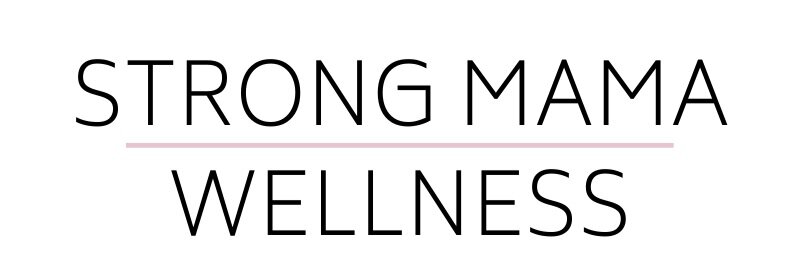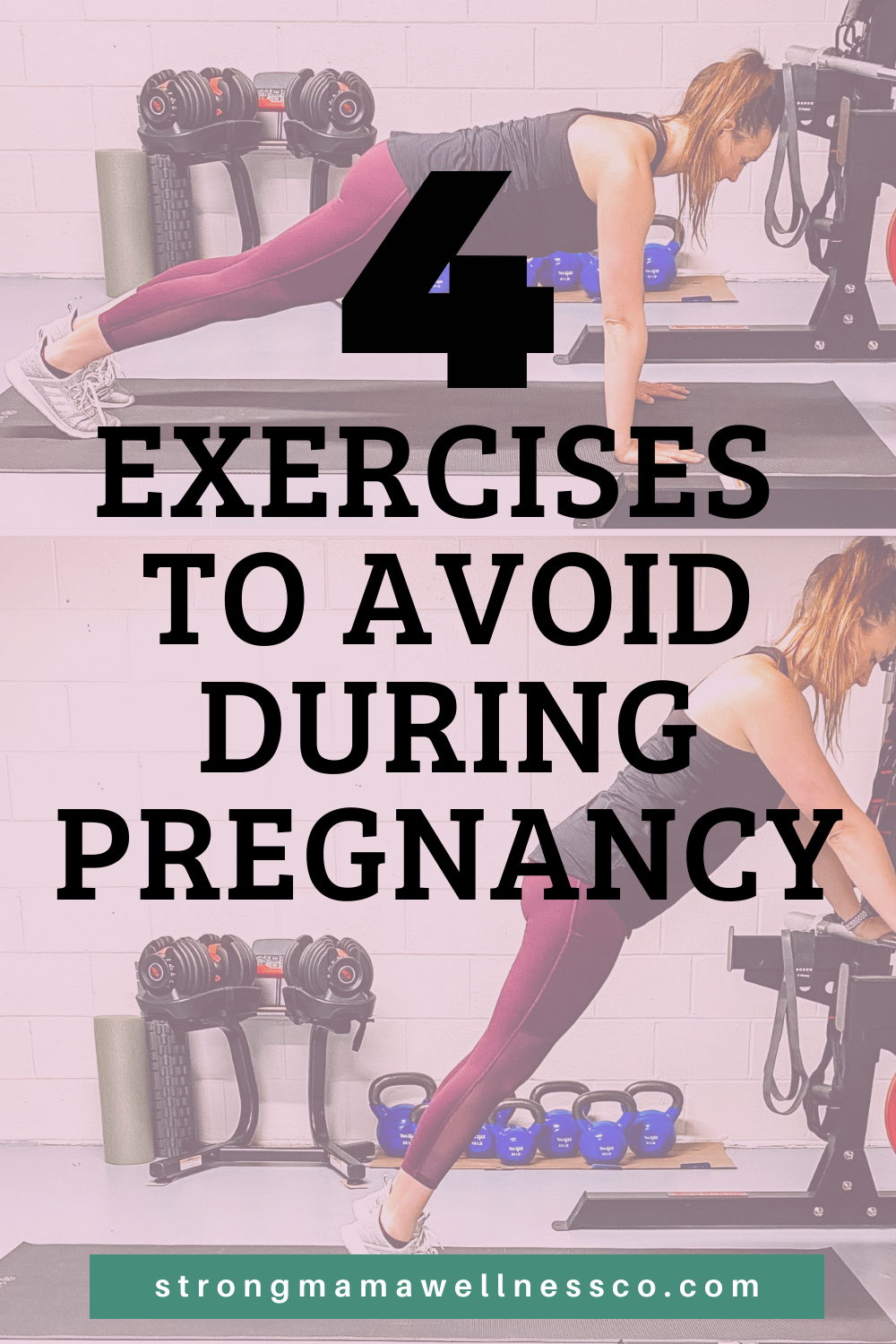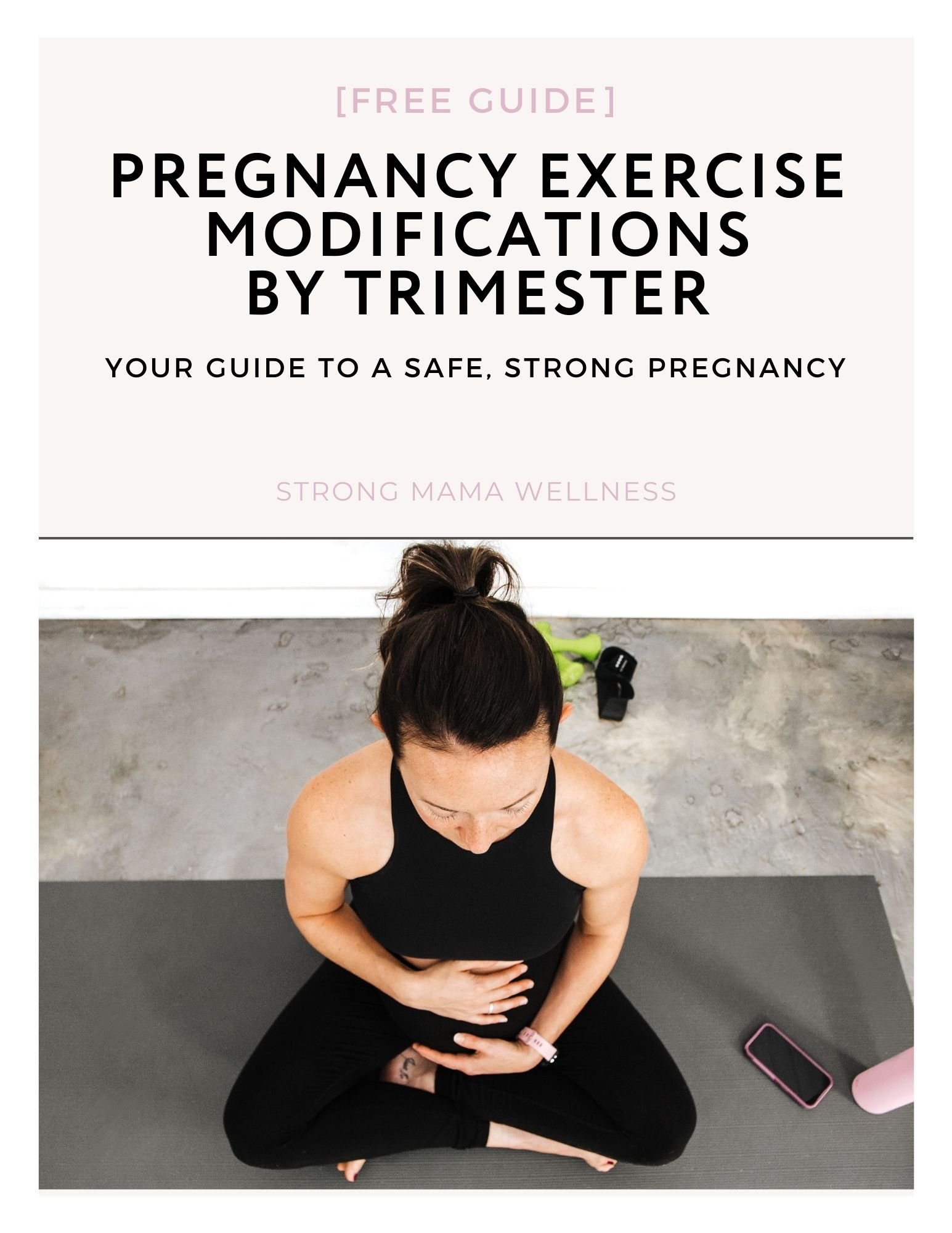What Exercises Should you Avoid during pregnancy?
If you’re wondering what exercises you need to avoid or modify in order to keep you and your baby safe, you’re not alone!
This was a major blind spot for me in the beginning of my first pregnancy fitness and I imagine it could be for you too. At the time, I had 8 years in the fitness industry under my belt and thought staying active during pregnancy would be easy!
Spoiler alert: It was not easy.
I was not immune to the first trimester fatigue, dips in motivation, and nausea.
Additionally, when I did have the energy to workout, I was constantly second guessing myself. I didn’t know what was safe! And, as a first time time mom, I was completely overwhelmed by all the conflicting advice and opinions on that matter.
After going through my pre/postnatal fitness certification program (halfway through that first pregnancy) I learned a lot about what it takes to keep your body safe and strong, while minimizing the risk for injuries, aches and pains. Once I had this knowledge, I felt MUCH more confident in my exercise routine and my ability to prepare for a healthy pregnancy and birth.
In this post, I will not only highlight key exercises to avoid, but what to do instead! You can apply this to your current workout routine or use these modifications in any classes you may be taking.
Don’t forget to grab my FREE guide to exercise modifications, outlined by trimester. This is a clear guide that will immediately help you feel more safe and confident!
Exercises to Avoid During Pregnancy
1.Advanced core work on back after the first trimester
Sit-ups, crunches, v-ups, knee tucks, etc. Exerting yourself while lying on your back as well as exercises that flex (curve) the spine should be avoided once you enter the second trimester.
Why? In pregnancy, your intra-abdominal pressure increases naturally. Traditional core work further increases that pressure, meaning it will either push out on your abdominal wall or down on your pelvic floor. This can cause issues related to diastasis recti or pelvic floor dysfunction.
Instead: try core exercises in the quadruped position, standing, or with unilateral strength workout. Some of my favorites include bird dog, standing march with overhead press, and unilateral squats (holding a dumbbell on one side only).
2.Full Planks — Use caution after first trimester
This includes both center and side planks. Similar to the reasoning above, the intra-abdominal pressure becomes tougher to manage, posing risk to your abdominal wall or pelvic floor.
Some women will be able to continue full planks through the second trimester, some will start to notice core doming and loss of form. Look out for those warning signs and be sure to take the modification, when needed. All women in their third trimester, should start to modify front and side planks.
Instead: Modify to incline planks (hands on couch or bench); continue to watch for core doming and loss of form.
3.High Impact Jumping - Use caution in 2nd trimester and beyond
Anything that requires exerting and jumping into the air: squat jumps, burpees, box jumps, etc tend to put a lot of pressure on the pelvis and pelvic floor. This increase in stress, in addition to the weight gain can often be more risk than reward, especially in the third trimester.
Jumping may still feel OK in your 2nd trimester; let your body be the guide. If you notice any pelvic joint pain, pressure, or leaking, those are warning signs to modify.
Instead: Do a calf raise instead of leaving the ground on a jumping exercise and/or substitute low-impact options. To raise the intensity without jumping, you can increase the speed of the exercise and/or hold light weights.
4.Harsh Rotations
This specifically includes exercises such as russian twists, cable or band rotations, and woodchops because they tend to pull the shoulders and hips in different directions. This is something you want to avoid once you reach the second trimester. Rotation is still an important movement for many reasons, but we do need to take the modifications in order to protect our core.
Note: gentle stretches with a rotation/twist are ok as long as they FEEL okay to you!
Instead: Be sure to align your shoulders and hips during the rotation once you reach your second trimester and have a visible belly. For a woodchop, this would look like pivoting on the balls of your feet, as pictured below.
Other
Avoid any movement that causes a bluge in the center of your abdominals (between your “6-pack” abs). This is too much pressure on the abdominals and could make diastasis recti worse. For example, you may notice a vertical “dome or cone” in the center of your abdominals when doing a sit-up.
Learn the Exact Modifications You Need Each Trimester
Download my FREE Pregnancy Exercise Guide where I break down each modification you need by trimester, along with what’s going on with your body during that phase.
This will help you immediately feel more safe and confident in your prenatal workouts!
Hey there! I’m Nicole, Pre/Postnatal Fitness Coach and founder of Strong Mama Wellness. I take the confusion out of prenatal fitness and help women prepare and strengthen their body for pregnancy, delivery, and recovery. You and your baby deserve to have a thriving, healthy pregnancy!
Exercise Safely and Confidently in Pregnancy
Grab the FREE Guide to learn important exercise modifications for each trimester to avoid injury and stay strong.










